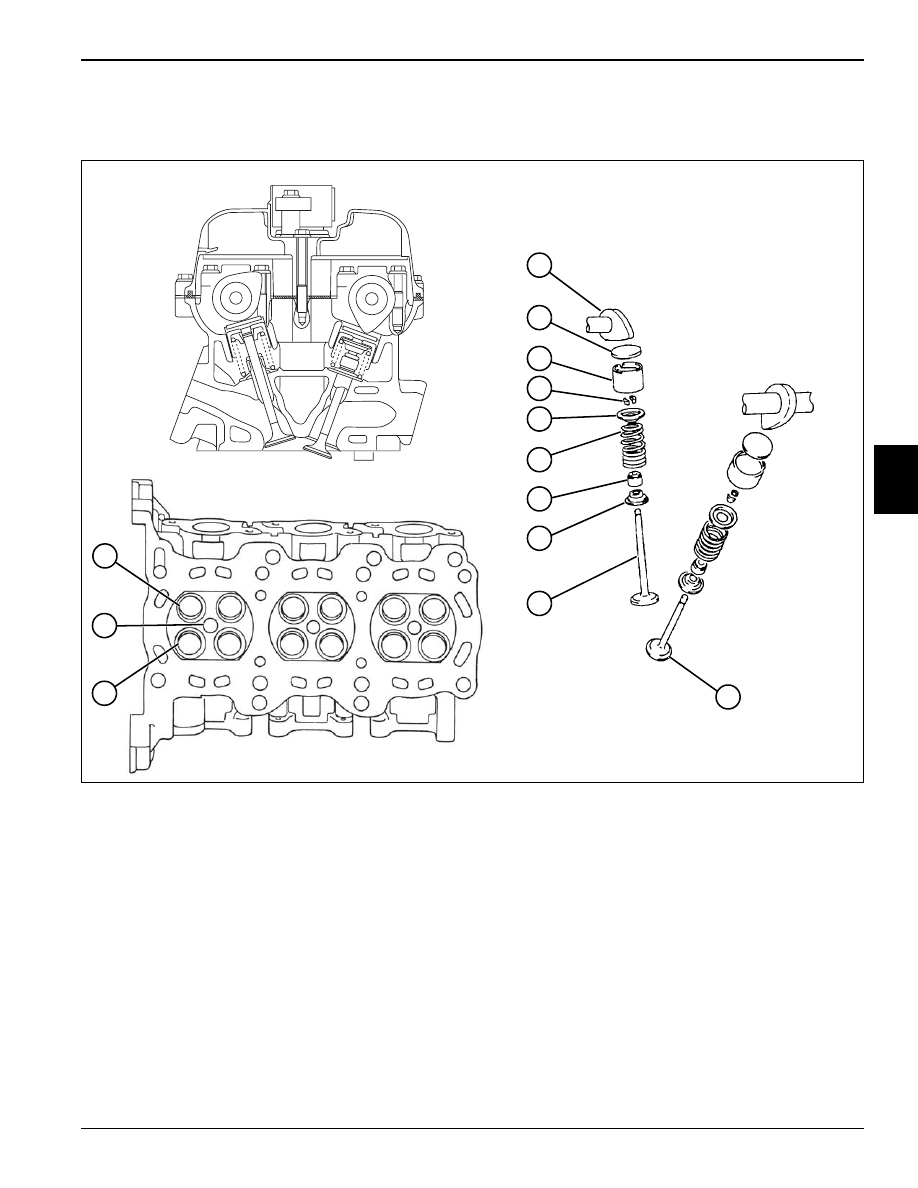Suzuki: Engine K6A-YH6. Manual - part 8

THEORY OF OPERATION
4-9
4
4.5 Cylinder Head and Valve Train
Figure 4-10
The twin cam, 4-valve per cylinder head is constructed
with an aluminum alloy that is both lightweight and
efficient in heat dissipation. Valve angle is set narrow to
also make for a compact head design.
The spark plug port (12) is located in the center of the
combustion chamber, with the combustion chamber
being a pent-roof design for improved combustion
efficiency.
The intake (11) and exhaust ports (13) are arranged in a
cross-flow style with each cylinder having two intake and
two exhaust valves for improved intake and exhaust
efficiency. Intake valves are faced with a dual angle while
exhaust valves have a single angle face.
The valve spring retainer (5), valve spring (6), valve seal
(7), and valve spring seat (8) are all installed over the
valve stem and held in place with the retainer locks (4).
The valves (9 and 10) are pushed down directly with the
camshaft lobe (1) via shim (2) and tappet (3). Valve lash
is adjusted by varying the thickness of the shim (2).
1
Camshaft Lobe
6
Valve Spring
11
Intake Port
2
Shim
7
Valve Seal
12
Spark Plug Port
3
Tappet
8
Valve Spring Seat
13
Exhaust Port
4
Retainer Lock
9
Intake Valve
5
Valve Spring Retainer
10
Exhaust Valve
TN0750, 0523, 0493
1
2
3
6
7
8
9
4
13
12
11
10
5